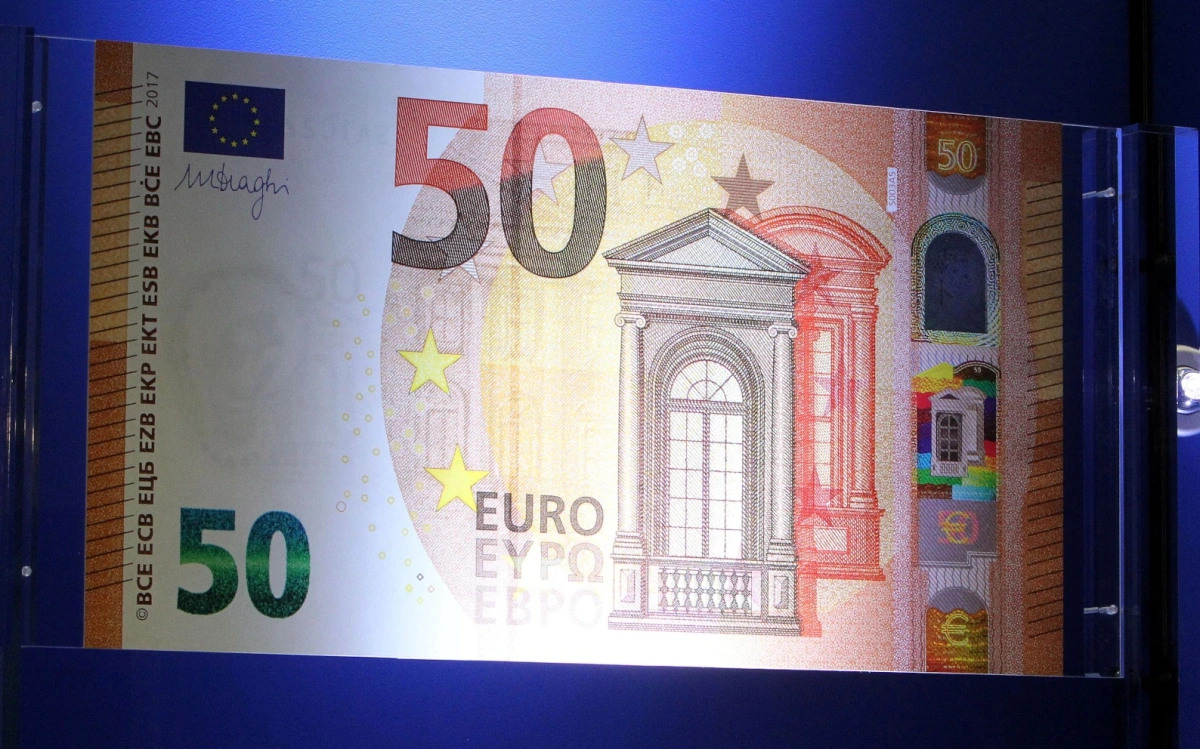The Russian currency rose in price against the backdrop of a press conference following a meeting of the Board of Directors of the Bank of Russia on monetary policy. The ruble is also supported by the tax period in Russia

(Photo: Ralph Orlowski/Reuters)
Euro to ruble exchange rate (EUR/RUB) fell by 0.7%, dropping to ₽97.9725, according to trading data on the Moscow Exchange as of 15:08 Moscow time. The previous time the European currency traded below ₽98 was on March 6.
The dollar (USD/RUB) by this time was trading at ₽91.47, 0.5% below the closing level of the previous day.
The Russian currency rose in price against the backdrop of a press conference by the head of the Central Bank, Elvira Nabiullina, on the rate. The Central Bank decided to extend the period of tight monetary policy. On Friday, April 26, the Board of Directors of the Central Bank for the third time in a row maintained the key rate at 16% per annum. The last time the rate changed was in December 2023 – then the Central Bank increased it from 15% to 16% per annum.
At a press conference, the head of the Bank of Russia said that if disinflation is slow, it is possible to maintain the key rate at the current level until the end of the year. If the disinflation process stops, the Central Bank does not rule out raising the key rate. However, this is not the basic scenario, said Elvira Nabiullina. In the base scenario, the regulator allows a rate reduction in the second half of the year.
The majority of council members were in favor of keeping the rate unchanged, but there was also an opinion in favor of raising it, the head of the regulator added.
The ruble is strengthening against foreign currencies also against the backdrop of the tax period in Russia. The ruble exchange rate is supported by the sale of foreign currency by individual exporting companies to pay taxes in rubles.
Intensification of foreign currency sales should be expected by the end of the month: on April 29, companies pay taxes for March and for the first quarter, said the leading analyst of the Financial Group Finam Alexander Potavin. The sale of export foreign currency earnings for the payment of corporate taxes to the state budget will last until May 2, due to the upcoming holidays.
Why did the Central Bank keep the rate of 16% and how will this affect the ruble, shares, bonds? 1b3nzdg”>,Ruble,Shares, Bonds
The strengthening of the ruble is facilitated by reports about the possibility of extending requirements for the sale of foreign currency earnings, believe BCS World of Investments. From October 2023, the largest exporters are required to credit 80% of foreign exchange earnings to accounts in Russia, and sell 90% of this volume. According to Vedomosti, the authorities decided to extend this requirement until the end of the year.
According to Sofia Donets, chief economist at Tinkoff Investments, the ruble exchange rate may close April at levels close to March. The current commodity situation generally contributes to the stability of the ruble, and internal conditions, including high ruble interest rates, support the domestic currency. Imports remain subdued, and the trade surplus in March doubled compared to previous months.
